Black History Along the Niagara River
Honouring Black history
along the Niagara River
Discover some of Canada’s most poignant stories of freedom and courage with Niagara Parks’ extensive collection of displays and monuments honouring Black Canadian history.
Follow the scenic Niagara River Parkway from Fort Erie north to the shores of Lake Ontario in Niagara-on-the-Lake, and learn about Niagara’s role in the legendary Underground Railroad that led an estimated 40,000 slaves to freedom throughout the 19th century. Along the way, stand in the spot where Harriet Tubman crossed into Canada in 1856, witness the landing points where freedom seekers arrived in Canada and see the printing press that printed Upper Canada’s 1793 Act Against Slavery.
Whether driving leisurely along the Parkway, or walking or cycling the 56-km (35 mi) Niagara River Recreation Trail, you’ll encounter a number of opportunities to enrich your experience with over 20 plaques and displays highlighting some of Canada’s most historic moments that unfolded right here in the Niagara region.
Use our map to help you plan out your journey to explore Black Canadian history along the Niagara River!
FORT ERIE
The Niagara Movement
This is the site of the former Erie Beach Hotel which hosted the inaugural meetings of the National Association for the Advancement of Colored People (NAACP), originally called the Niagara Movement. In July 1905, W.E.B. Du Bois and 28 men from fourteen states met at the hotel to write the group’s founding principles. The organization aimed to further African Americans’ fight for civil rights by building upon the progress gained since the American Emancipation Proclamation of 1863.
Pictured: Founding members of the Niagara Movement superimposed over an image showing Niagara Falls in the background, 1905
Location: Waverly Beach Park is located along the recreation trail just east of the beach parking lot. (Helena Street, Fort Erie, Ontario)

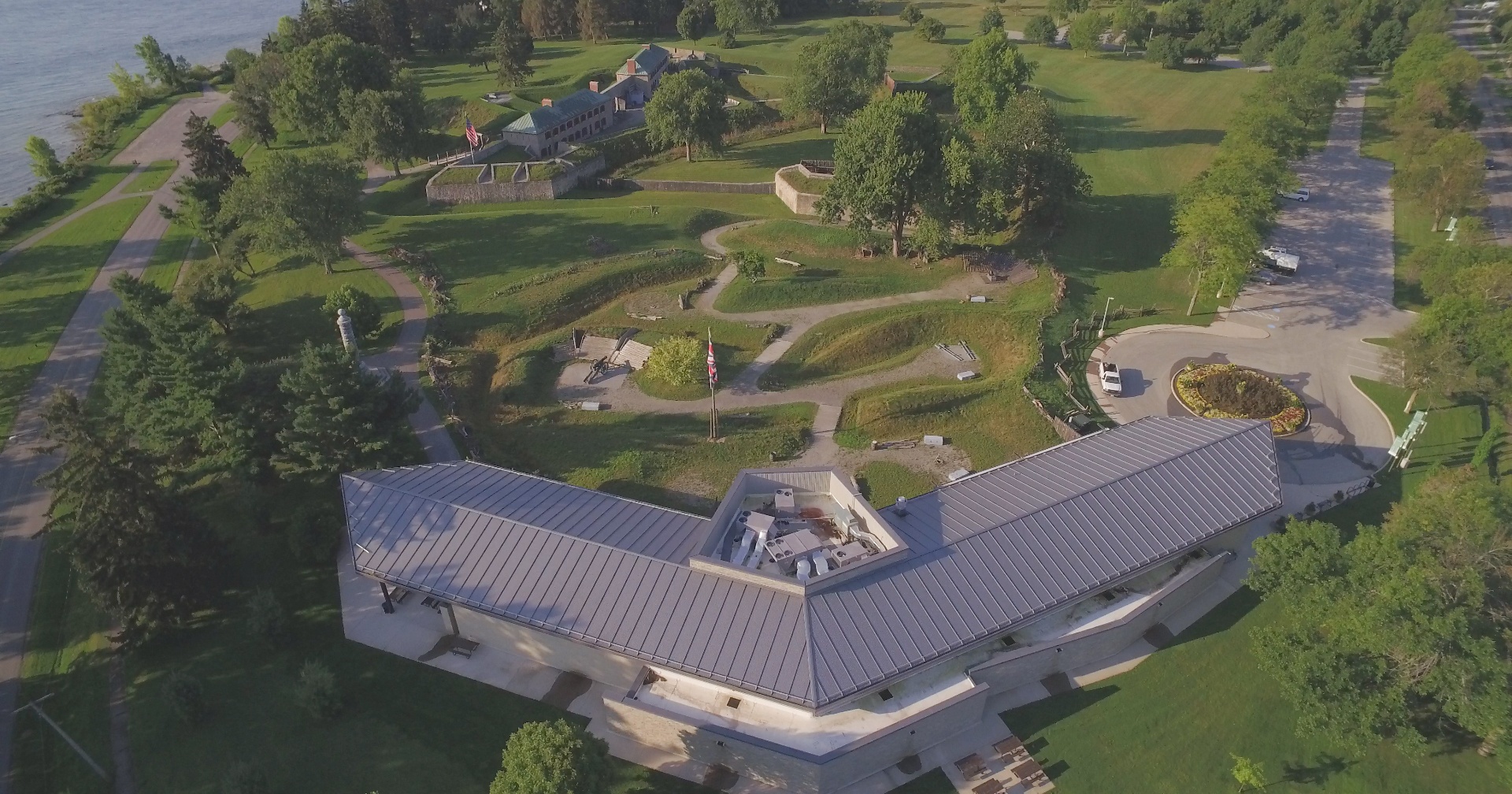
Waystation to Freedom
“In the 1840’s and 50’s, Fort Erie was a transit point for the Underground Railroad moving runaway slaves across the border to freedom in Canada. Slaves and their “conductors” would take the short boat-ride from the American side, to land at some secluded location. These night-time dashes would have been lit by a lantern such as this one.”
Location:
Old Fort Erie, Visitor Centre, 350 Lakeshore Road & Dominion Road, Fort Erie ON
Niagara’s Freedom Trail
Niagara’s Freedom Trail honours the thousands of African American slaves that found freedom in Canada. The Underground Railroad aided an estimated 40,000 African American slaves in their escape to the more tolerant northern American states, or ultimately to the freedom of Canada. Fort Erie, Ontario became a popular crossing for freedom seekers because of its proximity to Buffalo, New York. Ferry operators aided fugitive slaves and used a secret system of codes and symbols to distinguish bona fide passengers from potential spies.
Location: Look for the plaque located on a rock next to the Niagara River Parkway Trail. (108 Lakeshore Road, Fort Erie, Ontario)
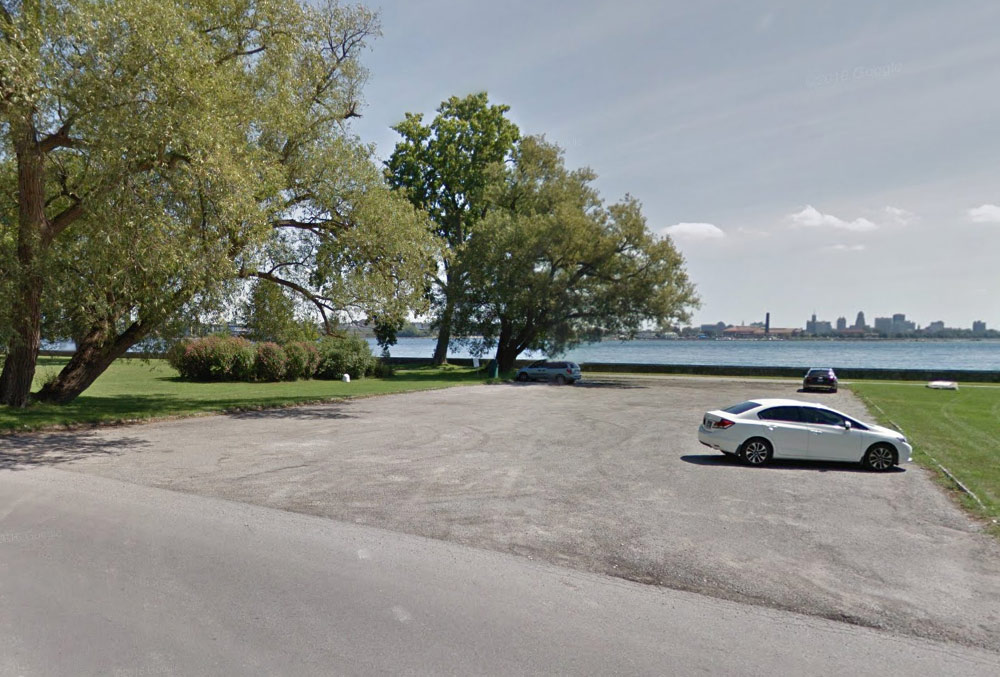

Bertie Street Ferry Landing & Freedom Park
The Bertie Street Ferry landing was the longest operating ferry dock used by freedom seekers and the site where thousands of fugitive slaves first set foot in Canada. Freedom Park was established at the site to honour the thousands of African Americans who found sanctuary and experienced freedom for the first time in Canada.
Location: Freedom Park is located on the river side between the Niagara Parks Marina and the nearby restaurant. (148 Niagara Boulevard, Fort Erie, Ontario)
Bertie Hall
Bertie Hall was constructed circa 1833 by local businessman, War of 1812 veteran and colourful entrepreneur, William Forsyth Sr. The Forsyth family constructed a large dock on the riverbank, where they operated a ferry across the river and this location served as a stagecoach stop and later as a hotel in the 1870s. The transportation routes along the Niagara River corridor became important for travellers to the area, including freedom seekers arriving on the Underground Railroad.
Location: 16 Phipps Street, Fort Erie, Ontario, L2A 2V2 (located on the corner of the Niagara Parkway and Phipps Street (42.931850, -78.914973)

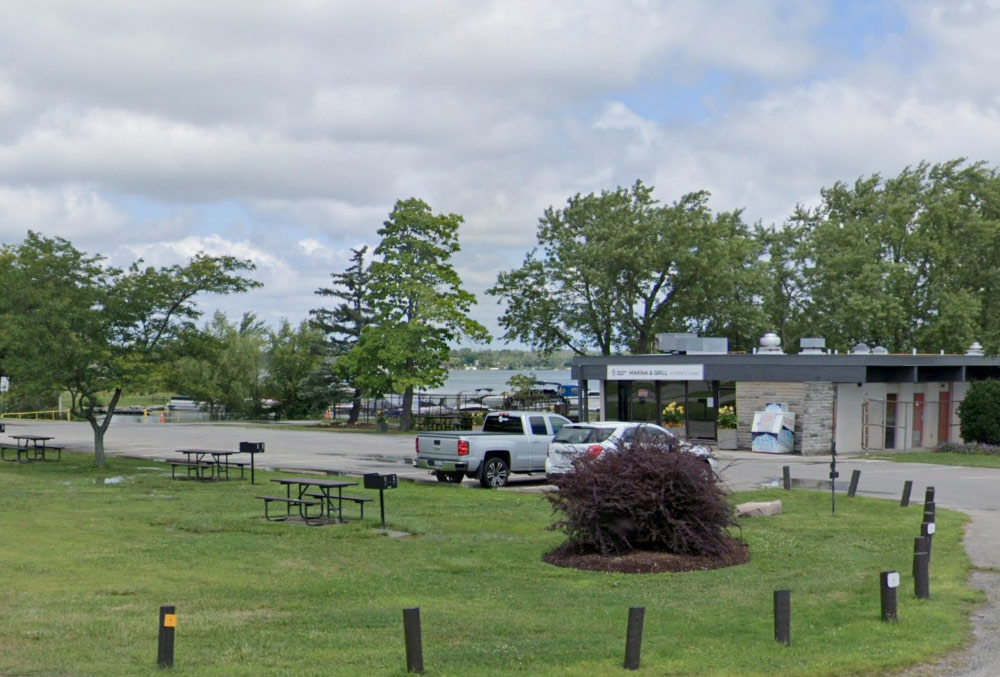
Little Africa
Little Africa was a popular settlement for freedom seekers arriving in Canada during the 1840s. Many of the inhabitants were employed cutting wood for fuel used by the nearby railways that ran through the settlement and steamboats that plied the Niagara River. The population of Little Africa grew to approximately 200 and declined in 1880 because of decreasing demand for wood in the area. A nearby graveyard remains as a legacy to this once thriving community of industrious Black Canadians.
Location: Look for a plaque on a rock on the south side of the Niagara Parks Marina parking lot (2400 Niagara River Parkway, Fort Erie, Ontario)
NIAGARA FALLS
Navy Island: The Caroline Incident
In 1837 the Canadian Rebellion, led by William Mackenzie, ended in a retreat to Navy Island for Mackenzie and some of his troops. A small steamer used to supply the rebels, called the Caroline, was discovered by the British. They attacked the ship, set it on fire and sent it over the Falls. In the process, only one person perished – an African American sailor by the name of Amos Durfee. At the same time, companies of Black Canadian militiamen commanded by Black officers were raised to patrol the Niagara River. One of the companies was commanded by Capt. Josiah Henson, the same Josiah Henson whose life story influenced the anti-slavery book Uncle Tom’s Cabin. As the threat of rebel attacks continued, more British Army regulars were brought into Upper Canada. The Black troops were used to capture the growing number of British Army deserters.
Location: Navy Island can be seen from the Canadian shoreline but is not accessible. It can be seen from the Chippawa Battlefield or Legends Restaurant at 9561 Niagara Parkway, Niagara Falls, Ontario, L2E 6S6 (43.0552189, -79.0158706)


Niagara Parks Power Station
(formerly the Canadian Niagara Power Generating Station or Rankine Station)
On April 25, 1902 John Clark, a Black employee, went to work his regular night shift. John worked as a ‘nipper’ and prepared dynamite for excavation blasting. That night he went to grab some dynamite north of the shaft. Upon finding it, he saw that the wiring had been tampered with. Had he not noticed this tampering, the detonation meant for the north face would have actually set off two cases of dynamite further back in the tunnel, causing a collapse and the possible death of 17 workers who would have been inside. To this day, it remains unknown who tampered with the dynamite, or why it was done.
Location: 7005 Niagara Parkway, Niagara Falls, Ontario. Located along parkway in between Table Rock House and the Floral Showhouse. (43.0751182, -79.0793766)
Harriet Tubman Tribute
Born on a Maryland plantation around 1822, Harriet Tubman escaped slavery in 1849 to become a leading abolitionist and the most famous conductor of the Underground Railroad. Known as “the Moses of her People,” she guided thousands of enslaved African Americans to freedom. When the US Fugitive Slave Act of 1850 led to the arrest and kidnapping of runaway slaves and free blacks living in the free states, Tubman extended her route to Canada, where slavery had been abolished in 1834, and established her base of operations in nearby St. Catharines.
Location: Look for plaques south of the entrance the White Water Walk, on the river side. (4330 River Rd, Niagara Falls, Ontario)

QUEENSTON
The “Colored Corps” 1812-1815 (Queenston Heights near Brock’s monument)
“When the War of 1812 began, people of African descent in the Niagara peninsula feared an American invasion. They were anxious to preserve their freedom and prove their loyalty to Britain. Many joined the militia, others offered to raise their own militia company. Authorities responded by forming a ‘Colored Corps’ of about thirty men commanded by white officers. Based in the Niagara region throughout the war, it fought at Queenston Heights in October 1812 and at the siege of Fort George in May 1813. The corps was disbanded soon after the peace, but had nonetheless set a precedent. Black units were a feature of the Canadian military until the First World War.”
Location: 14184 Niagara Pkwy, Niagara-on-the-Lake, Ontario L0S 1J0. Located near path just North East of Brock’s Monument. (43.160318, -79.052636)

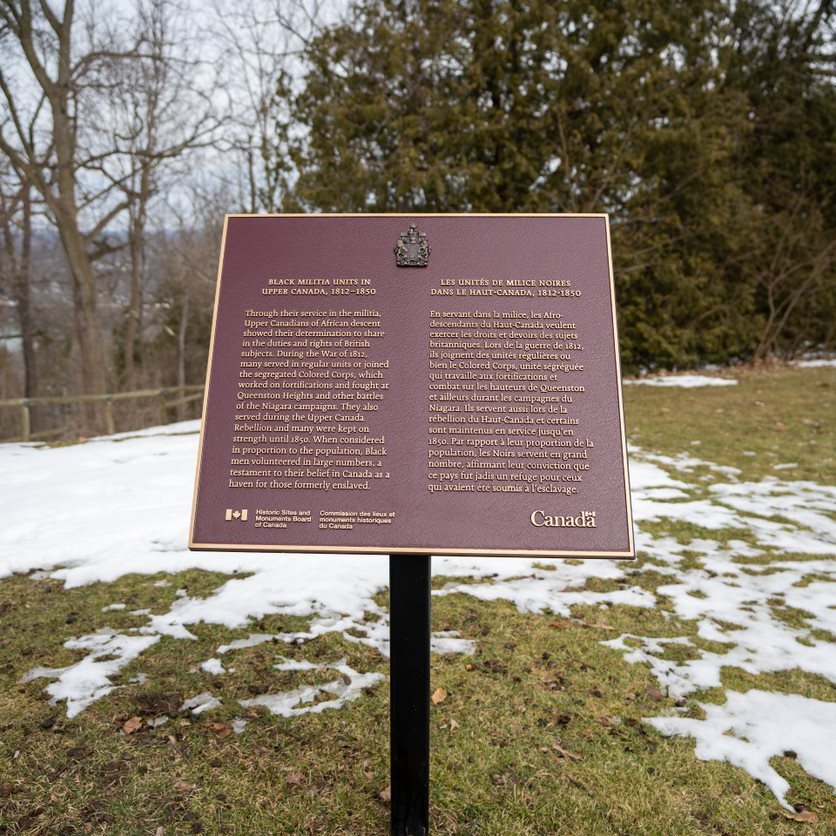
Black Militia Units in Upper Canada, 1812–1850 (Queenston Heights Park)
“Through their service in the militia, Upper Canadians of African descent showed their determination to share in the duties and rights of British subjects. During the War of 1812, many served in regular units or joined the segregated Colored Corps, which worked on fortifications and fought at Queenston Heights and other battles of the Niagara campaigns. They also served during the Upper Canada Rebellion and many were kept on strength until 1850. When considered in proportion to the population, Black men volunteered in large numbers, a testament to their belief in Canada as a haven for those formerly enslaved.”
Location: 14184 Niagara Pkwy, Niagara-on-the-Lake, Ontario L0S 1J0. In Queenston Heights park just South of the Queenston Heights Restaurant or Northwest of Public Washrooms. (43.160264, -79.052522)
Mackenzie Printery
Home of the Louis Roy press, the oldest wooden press in Canada, and one of only seven left in the world today. This press was used to print Ontario’s first newspaper “The Upper Canada Gazette or American Oracle”. It was also used to print some of Canada’s earliest laws, including the 1793 Act Against Slavery. This act did not free the enslaved but it prevented enslaved people from being brought into or sent out of Upper Canada. It also freed children born to enslaved mothers at the age of 25. It was this act that would slowly work towards the elimination of slavery within Upper Canada.
Location: 1 Queenston St, Queenston, Ontario L0S 1L0. The Louis Roy press and copy of the Act Against Slavery can be found inside the Mackenzie Printery Museum. (43.1623859, -79.0535945)
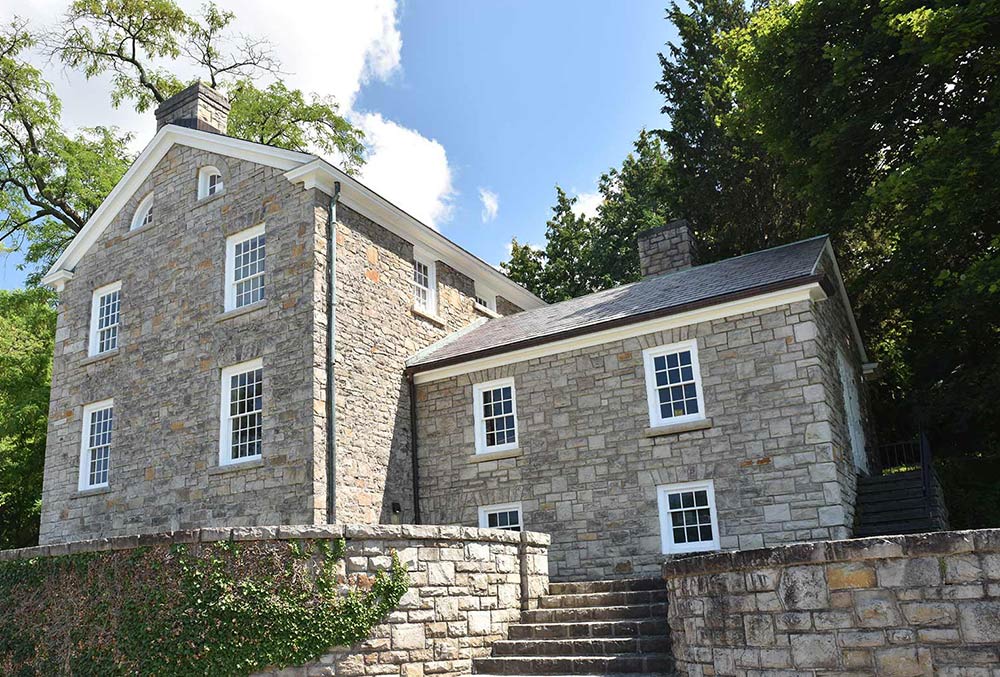

Chloe Cooley
On March 14, 1793, Chloe Cooley was violently bound and dragged to the shores of the Niagara River by Sergeant Adam Vrooman with the assistance of two other men. Cooley fought back hard, screaming and yelling for help as she struggled to get free. Her screams and violent resistance were brought to the attention of Lieutenant Governor John Graves Simcoe by Peter Martin, a free Black and former soldier in Butler’s Rangers and William Grisley, a neighbour who witnessed the event. An avowed abolitionist, Simcoe immediately moved to abolish slavery in the new province of Upper Canada; however, he was met with opposition in the House of Assembly. Finally, a compromise was reached, and on July 9, 1793, an Act printed at the Louis Roy Press was passed that prevented the further introduction of enslaved people into Upper Canada and allowed for the gradual abolition of slavery. It was the first piece of legislation in the British Empire to limit slavery and set the stage for the great freedom movement of enslaved people, known as the Underground Railroad.
In celebration of Black History Month 2023, a new stamp unveiled by Canada Post featured an illustration of Chloe Cooley.
Location: Look for a plaque on the water side of the Niagara Parkway, just south of the crossing of Line 6 road and the Niagara Parkway. There is also a display at Laura Secord Homestead.
NIAGARA-ON-THE-LAKE
Simcoe Memorial
It was here in Niagara-on-the-Lake where John Graves Simcoe, Lt Governor of Upper Canada, made the first legislative steps in the Act Against Slavery of 1793.
Location: The Simcoe memorial is located at Navy Hall in Niagara-on-the-Lake (305 Ricardo Street, Niagara-on-the-Lake, Ontario)


Butler’s Rangers
Lt Col John Butler formed a regiment of British Loyalists in 1777. Butler’s Rangers was open to African Americans joining their ranks that were “freed” Black men. However, at this point in time, John Butler himself was known to have enslaved men. Some of the men enslaved to Butler fought within the Rangers; it is unclear whether this was by choice. This included Richard Pierpoint, a man who fought during the revolution and won his freedom and a land grant. He was a leader within the Black community in Niagara and started the petition for an all-Black unit to fight during the War of 1812 which led to the establishment of the “Colored Corps”.
Location: Plaque located across from Niagara-on-the-Lake Hospital at 120 Byron Street, Niagara-on-the-Lake, Ontario L0S1J0. (43.2539520, -79.0659124)
Fort Mississauga
Constructed between 1814 and 1816, Fort Mississauga was built directly across from its American counterpart, Fort Niagara. This fort was built to watch the mouth of the river and act as a replacement for Fort George located further upstream. This fort was constructed by British forces and in large part by the “Colored Corps”. Due to their background in hands-on labour, they were deemed acceptable engineers by the army which is why much of the construction fell to them. Although this Fort never saw action with the War of 1812 coming to an end during its construction, it continued to play a vital role during the Rebellion in 1837 and the Fenian Raids in 1866. After that time, the fort held minimal military value and was used as part of Camp Niagara to train troops.
Location: 223 Queen Street, Niagara-on-the-Lake, Ontario L0S 1J0. The fort can be located at the Niagara-on-the-Lake Golf course and can be accessed by the public on foot. (43.2615315, -79.0770005)


Camp Niagara
Canadian troops trained for WWI, WWII and Korea. Here African Canadian soldiers trained alongside their fellow Canadian soldiers in preparation for going to war.
Location: 440 King Street, Niagara-on-the-Lake, Ontario, L0S 1J0. Large field located across the street from Fort George. There are a few barracks buildings and plaques. (43.2476562, -79.0732464)
The Solomon Moseby Affair 1837
“The second courthouse and jail of the Niagara District was erected at this site in 1817. Several high-profile cases were tried here, including that of African-American freedom seeker Solomon Moseby. In the spring of 1837, Moseby stole his enslaver’s horse and escaped, settling in Niagara. A few weeks later, his new-found freedom was threatened when his enslaver arrived with an arrest warrant and extradition papers. Moseby was detained at this jail while awaiting an extradition decision. Over 200 Black community supporters mobilized and camped outside to protest Moseby’s possible return to slavery and harsh punishment in the United States. When the extradition order was given, the protestors obstructed Moseby’s removal. Two Black residents, Herbert Holmes and Jacob Green, were killed. Moseby escaped, fled to England and later returned to live in Niagara. For African Canadians, this was not simply about justice for one man. If Moseby’s enslaver had succeeded, they could all be vulnerable to extradition and re-enslavement. This incident helped to establish Canadian extradition and refugee policies that are still used to today.”
Location: At the site of the former complex, Rye and Cottage streets, Niagara-on-the-Lake. (43.2430412, -79.0811757)


Voices of Freedom Park
Voices of Freedom gives expression to the silenced and forgotten stories of people of African descent, enslaved, freed, and free, whose sacrifices, labour, skills, and talents contributed to the development of Niagara-on-the-Lake. The Town of Niagara-on-the-Lake has set aside a significant site in the heart of the Old Town to understand, celebrate and honour its Black history. The Voices of Freedom memorial is an experiential art installation designed to engage, educate and challenge visitors about this important part of Canadian history.
Location: 244 Regent St, Niagara-on-the-Lake, ON L0S 1J0. At the corner of Regent and Johnson Street. (43.2544047, -79.0730999)
Parliament Oak Public School
Harriet Tubman plaque: “When I found I had crossed, there was such a glory over everything I felt I was in Heaven. I am free and they shall be free. I shall bring them here”
Location: 325 King Street, Niagara-on-the-Lake, Ontario L0S 1J0. (43.252096, -79.0735904)

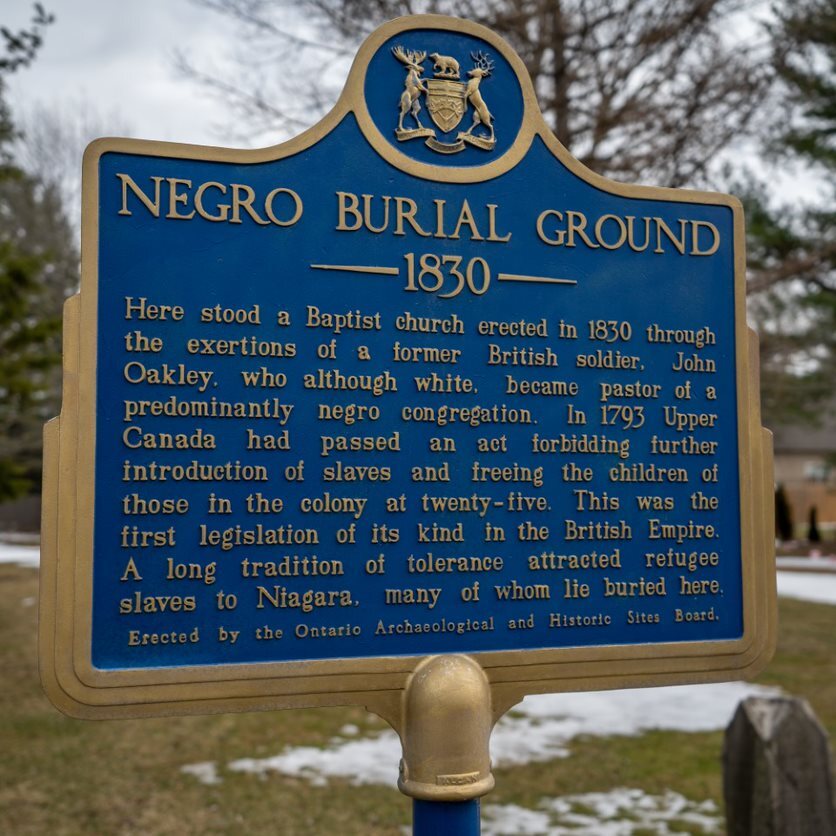
The Negro Burial Ground 1830
A long tradition of tolerance in Upper Canada attracted refugee enslaved people to the Niagara area prior to the American Civil War. In 1830, a church was constructed by the predominantly black Baptist congregation led by John Oakley, a former soldier in the British forces.
Location: At the site of the former church and its burial ground, adjacent to 494 Mississauga Street, Niagara-on-the-Lake between Mary and John Street. (43.2522050, -79.0843638)
The Upper Canadian Act Against Slavery (1793)
“Inspired by the abolitionist sentiment emerging in the late 18th century, Lieutenant-Governor J.G. Simcoe made Upper Canada the first British territory to legislate against slavery, which had defined the conditions of life for most people of African ancestry in Canada since the early 17th century. The Act of 1793 did not free a single slave, but prevented their importation and freed the future children of slaves at age twenty-five. Faced with growing opposition in the colonies, slavery declined. The Imperial Act of 1833 finally abolished slavery in the British territories in 1834.”
Location: Also located at the Burial Ground on Mississauga Street, Niagara-on-the-Lake, between Mary and John Street. (43.2522050, -79.0843638)

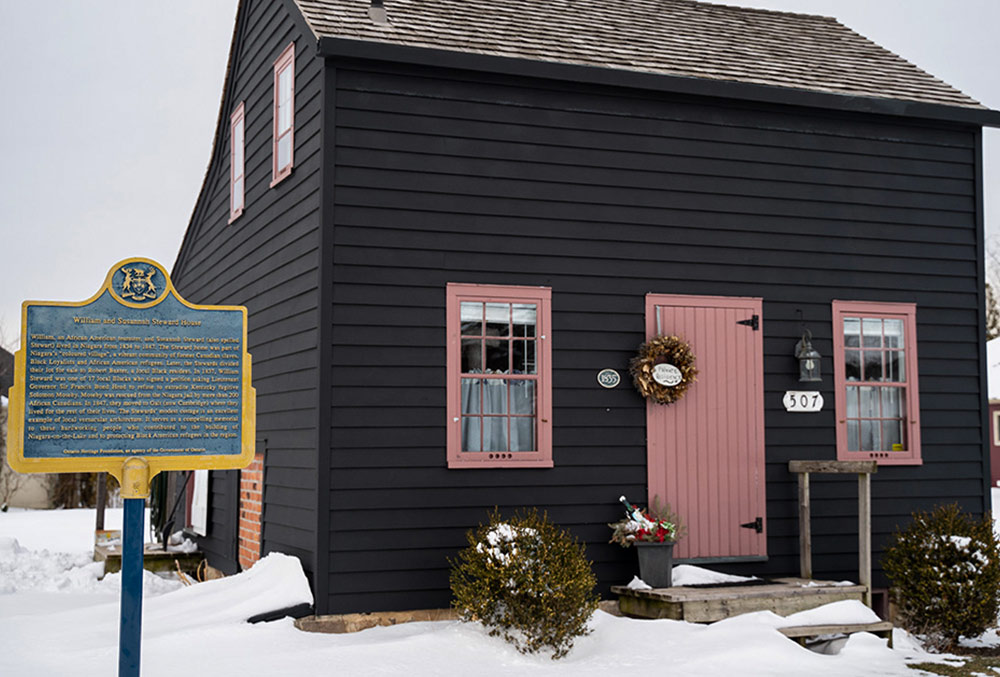
William and Susannah Steward House
The Steward home was a significant part of Niagara’s community of former Canadian slaves, black Loyalists and African American refugees that settled in the region in the 19th century. In 1837, homeowner William Steward was one of 17 people who signed a petition asking Lieutenant Governor Sir Francis Bond Head to refuse to extradite Kentucky fugitive Solomon Moseby. Moseby was rescued from the Niagara jail by more than 200 community members. The home now serves as a compelling memorial to the hardworking people who contributed to the building of Niagara-on-the-Lake and to protecting African American refugees in the region.
Location: Located on the corner of Butler and John Street (507 Butler Street, Niagara-on-the-Lake, Ontario)

 Close and
Close and